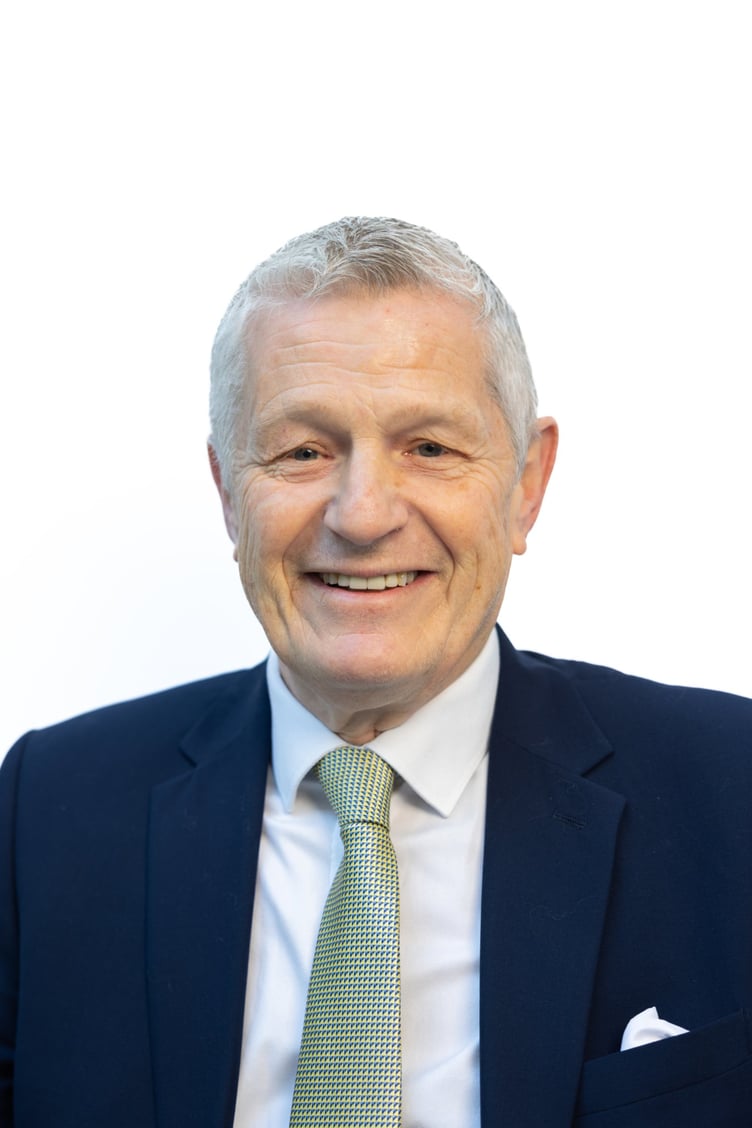Visit Isle of Man – the modern equivalent of the old Tourist Board – is now in its fifth year of operation but the pandemic has meant that visitor numbers to the island have been curtailed for most of that time. After what has been the first full summer holiday season since 2019, Julie Blackburn spoke to some industry insiders for an update.
Ranald Caldwell is the Visit agency’s non-executive chairman. He previously spent 37 years in the finance sector and brings a wealth of enthusiasm to the role. He reckons that the agency has now laid down a solid foundation on which to grow the tourism sector.
He says: ‘I think it’s fair to say that the delivery and management of performance is something that the private sector is bringing to government.
‘We’re moving into much more of a performance management world and being held accountable for what we’re being asked to deliver. I think we have a better view of how our industry works with the data [we’ve collected] and we’re taking decisive action based on that data.
‘It’s no longer a hunch, it’s based on fact.’
The Visit agency has been tasked with achieving a number of positive outcomes but the overarching aim is to increase visitor numbers to the island to 500,000 by 2032.
It sounds a lot but it has been done before.
Visitor numbers to the Isle of Man in its tourism heyday in 1913, estimated on Steam Packet arrivals, was 663,000. It has not been equalled since though 1948 came close, before numbers started to drop.
For this year’s summer season, visitor numbers have been estimated at 275,000, a figure which is also based on passenger numbers and includes business travellers. It also includes those people who rolled over their TT bookings from 2020.
Bearing in mind that the visitor accommodation occupancy figures for June and July of 2022 averaged 80% right across the sectors, this suggests that a lot more accommodation will be needed in order to come anywhere near the 500,000 figure. The boarding houses that used to line Broadway and the hotels all along Port Erin promenade, for example, have mostly been replaced by apartments and, although the self-catering property numbers are increasing, current accommodation levels cap visitor growth at 345,000.
John Keggin owns Island Escapes, which manages just under 100 self-catering properties. In all, the company has around 400 bed spaces and in 2022 it had 90% occupancy, with 25,000 visitors booking an average stay of seven nights during the peak summer season and four to five nights outside of that.
He says: ‘From our perspective it’s been a busy season and it’s been great to see the first normal year post-Covid, in the sense that this is a full season for the first time for some time now.
‘We’ve had strong levels of demand all the way through from April and it’s just tailing off now, at the end of October, so things have been pretty positive really.’
But when it comes to growing visitor numbers, he adds: ‘Even if we doubled our business now to 200 properties, and took 50,000 visitors a year, I don’t see the ability for us to become much more than that because it would be too difficult to try to manage so we’re going to need a lot more in the way of hotels if the island is going to see those sort of figures.’
Ranald agrees.
‘Accommodation is key in the development of our growth proposition,’ he says.
He thinks there is great potential in taking a more imaginative look at all the sites available in the island that might be suitable for the construction of new hotels, possibly on brownfield sites or repurposing existing buildings which are lying empty. He also says the Visit agency board is looking at new ways of encouraging private sector investment but all this is clearly a long term prospect.
In the meantime the agency is looking at more immediate targets such as increasing visitor numbers in the so-called ‘shoulder season’ – October, November and December.
This year, for example, Manx National Heritage sites and the heritage railways will remain open and running until the end of November.
Ranald says that this is in part due to the current make-up of the Visit agency board, which bring together different elements of the industry.
He says: ‘We’ve now got a board which is clearly representative of the Isle of Man, so we’ve got the air and sea directors, Manx National Heritage, Chamber of Commerce, Biosphere, events, accommodation and what we’ve added on top is we’ve now got two substantial UK directors who have come from the industry. They are very well connected with UK inbound and they’re opening doors for us.’
Historically the Isle of Man has not captured a representative share of the UK and Irish visitor market and there is huge potential there.
Only 19,000 of our visitors came from Ireland last year and Ranald has been meeting with Tourism Ireland to try to improve this.
This in turn leads onto the idea that the large number of American visitors to Ireland might consider adding the Isle of Man to their itinerary. The Visit agency is also targeting the UK travel trade with information and marketing support, to encourage them to suggest an Isle of Man holiday or weekend break to their customers.
The really heartening thing is that, when people do come, they seem to like it.
John Kissack says: ‘We have had lots of good guest feedback, lots of first-time visitors to the island as well. That’s been interesting as people [in the UK] are obviously choosing to holiday closer to home and discover the island for the first time. We’ve had lots of positive feedback about the island.’
There are a number of good reasons why we should be trying to increase our visitor numbers, not least because, theoretically at least, the more people that are using our airlines and ferries the better the service should be, with more flights and sailings. And there are other reasons.
Ranald says: ‘We are trying to sell the Isle of Man from a number of perspectives, not just for a visit but to say why you should come and live here.
‘And I think when you add it all together the visitor economy adds the vibrancy – the va-va-voom you could say – to the economy generally because what we develop for visitors is great for residents because they get to experience them too.’
He adds: ‘We have ambitious targets of that there is no doubt but that ambition has sparked the interest of the industry itself and of the airlines to say: “There’s going to be substantially more traffic coming to the Isle of Man”, so that confidence is self perpetuating.
‘People are now interested because we have a vision of growth so they want to be part of that growth.’





Comments
This article has no comments yet. Be the first to leave a comment.